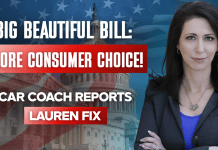The forecast for 2022 in the automotive industry has been a bit of a mixed bag as 2021 did not see the huge turnaround from COVID that many had hoped for. Delta and Omicron delayed a stout rebound until much later in the year.
Add to that the chip shortage that settled in early last year and you have an industry that is being affected on all fronts. Higher prices for new and used vehicles, empty lots, and inflationary pressures at a 40 year high put dealerships and manufacturers in a rather precarious position with little choice but to wait it out the best they can.
What does 2022 look like? What data can we look to for clues as to how the rest of 2022 will fare in F&I and how these factors could impact already historically high profits…
Inventory coming back?
IHS Markit projects a modest 2% increase in new car availability which is rather lukewarm news for everyone downstream. OEMs are still not at pre-COVID production levels, and it may be 2023 or 2024 before inventory levels rebound fully. With more customers in 2021 putting off buying new cars due to low availability, it affected the used market with fewer frontline-ready trades.
F&I PVRs have been higher this last year due in large part to higher sales prices for new and used which has bolstered high finance reserves. Short supply is causing many car shoppers to pay MSRP or higher to get the car they want and even then, many must wait for factory orders that could take months.
An increase in sales, albeit small for the first half of 2022, presents opportunities for ancillaries to remain strong as buyers are looking to protect their new purchase in more ways than just a VSC or GAP. Keeping the car looking good and well maintained is becoming more important to buyers who know they will need to squeeze every future trade-in dollar out of their car to make the next purchase happen as prices rise.
Longer ownership may have an impact
The average car owner is now keeping their vehicle an average of 12 years before trading up or buying new. That’s a long time.
Time to double down on VSC if you aren’t already. Buyers that are likely to keep the car well beyond their loan term, especially due to higher new & used prices, then VSC should be the focal point of the presentation. Between the high cost of parts and the increase inexpensive electronic parts, buyers must be made aware of the risk of not having this protection.
There is one area where there could be some decrease in sales…GAP insurance. As insurers are offering higher valuations for vehicles due to overall wholesale increases, buyers may feel that there is not as much worry about bridging the gap between the loan balance and value at the time of loss. Used car values have risen quickly and are not forecasted to return to more ‘normal’ levels until well into late 2022.
Interest rates on the rise
With the widespread speculation that the Fed will increase the prime lending rate in response to historically high inflation. Some have predicted it could come in the form of three separate .25% increases, though nothing has been confirmed.
If that happens, F&I could be negatively impacted on finance reserves but with a strong mix of lending options available and an increased focus on tightening F&I menus to focus on the highest margin products, it’s a storm that can be weathered easily.
Online buying is here to stay
COVID or not, a recent survey shows that 70% of consumers prefer to shop online for their car versus going to the lot. People would rather stay home to find their next car and are perfectly okay with handling every aspect of it from the comfort of their home.
This will force dealers who, up to this point in the pandemic, have been hesitant to fully embrace digital retailing to finally go all in. Consumers want a faster overall process to buy a car and online buying is in many ways a more seamless way to sell. If you’re not all in on digital retailing now, you will be soon.
Did you enjoy this article from Kristine Cain? Read other articles on CBT News here. Please share your thoughts, comments, or questions regarding this topic by submitting a letter to the editor here, or connect with us at newsroom@cbtnews.com.
Be sure to follow us on Facebook and Twitter to stay up to date or catch up on all of our podcasts on demand.
While you’re here, don’t forget to subscribe to our email newsletter for all the latest auto industry news from CBT News.










